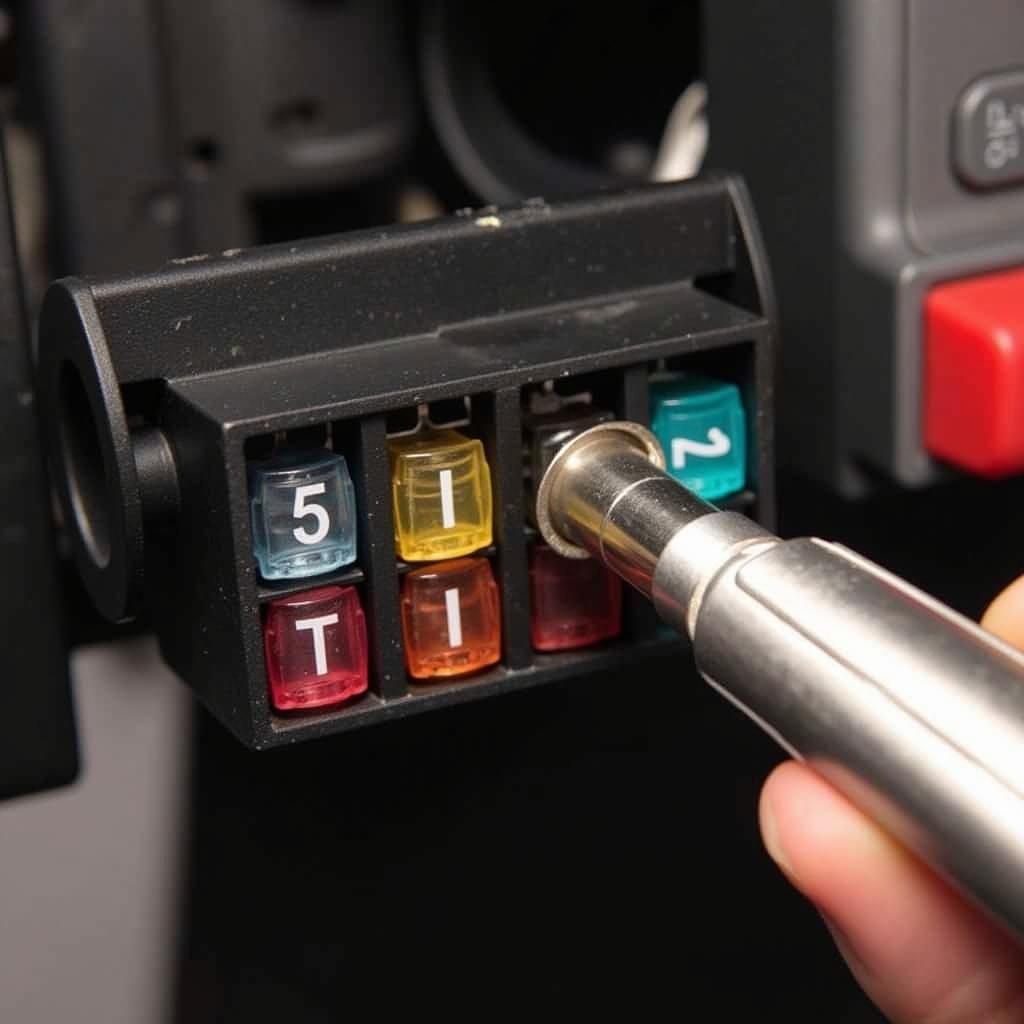The dreaded brake pad warning light – a sight that can send shivers down any car owner’s spine, especially when an MOT is looming. But what does it mean when that little light illuminates on your dashboard? And, more importantly, will it cause an automatic MOT failure? This comprehensive guide delves deep into the world of brake pad warning lights, providing you with the knowledge you need to conquer this common car conundrum.
Understanding Your Car’s Braking System
Before we dive into the specifics of the warning light, it’s crucial to have a basic understanding of how your car’s braking system operates. At its core, the system relies on friction generated by brake pads pressing against brake discs (or drums in some older vehicles) to slow down or stop your car.
Over time, these brake pads wear down with use. To prevent driving with dangerously thin pads, most modern vehicles are equipped with a wear indicator – a small metal tab strategically placed within the brake pad itself.
Deciphering the Brake Pad Warning Light
The illumination of the brake pad warning light signals that the brake pads have worn down to a critical level, engaging the wear indicator. When this indicator makes contact with the brake disc, it completes an electrical circuit, triggering the warning light on your dashboard.
While the warning light itself might not directly lead to MOT failure, the underlying issue it represents certainly will. In the UK, the minimum legal brake pad thickness for an MOT is 1.5mm across 75% of the pad’s surface.
Common Causes of a Brake Pad Warning Light
While worn brake pads are the most common culprit behind the illuminated warning light, several other factors can trigger it, including:
- Worn or damaged brake pad wear sensors: Like any other car component, wear sensors are susceptible to damage or wear, potentially leading to false positive warnings.
- Low brake fluid levels: Brake fluid plays a crucial role in transmitting the force applied to the brake pedal to the wheels. Low fluid levels, often caused by leaks, can trigger the warning light.
- Electrical faults: Issues within the car’s electrical system, such as a faulty sensor or wiring, can also lead to an inaccurate warning light.
Can You Drive With the Brake Pad Warning Light On?
The short answer is: it’s not advisable. Driving with significantly worn brake pads not only jeopardizes your safety but also risks damaging other braking system components, leading to costlier repairs.
However, if the warning light appears intermittently or you suspect a potential fault other than worn pads, it’s best to exercise caution and consult a qualified mechanic promptly.
 Mechanic Inspecting Brake Pads
Mechanic Inspecting Brake Pads
What to Do When Your Brake Pad Warning Light Comes On
If the brake pad warning light illuminates, it’s crucial to:
- Don’t panic: While it signals a potential issue, it’s not an immediate cause for alarm.
- Assess your brakes: Do you notice any unusual noises when braking, like squealing or grinding? Has your braking distance increased?
- Check your brake fluid level: Ensure the fluid level in the reservoir is within the minimum and maximum marks.
- Consult a qualified mechanic: Schedule an appointment with a trusted mechanic to diagnose and address the underlying issue.
Preventing Future Brake Pad Issues
Proactive maintenance is key to extending the lifespan of your brake pads and preventing premature wear. Follow these tips:
- Adopt smooth braking habits: Avoid harsh braking whenever possible.
- Lighten your load: Carrying excessive weight puts additional strain on your braking system.
- Adhere to your car’s service schedule: Regular brake inspections and fluid flushes are essential.
Conclusion
The brake pad warning light serves as your car’s early warning system, alerting you to a potential issue with a critical safety system. While it might not automatically lead to MOT failure, ignoring it can result in dangerous driving conditions and costly repairs. Remember, addressing the issue promptly and practicing preventative maintenance will keep you and your car safe on the road.


